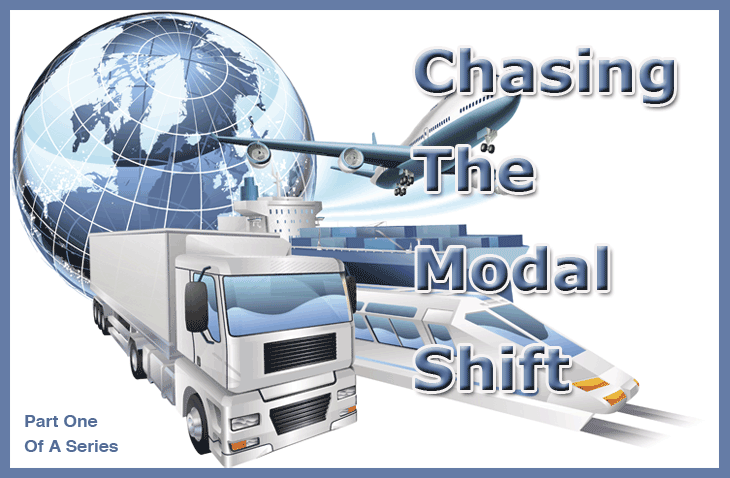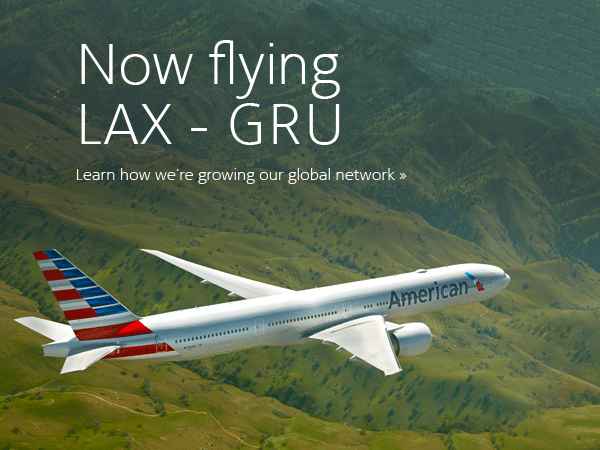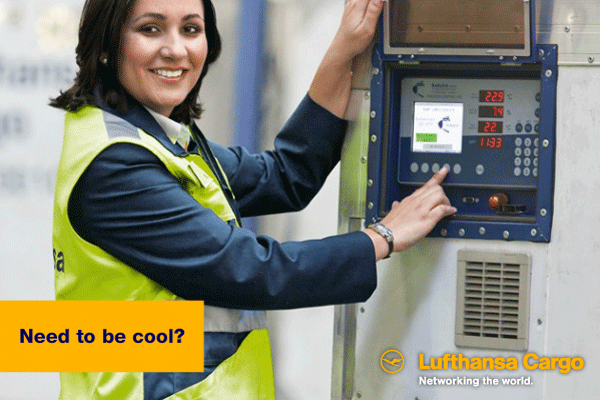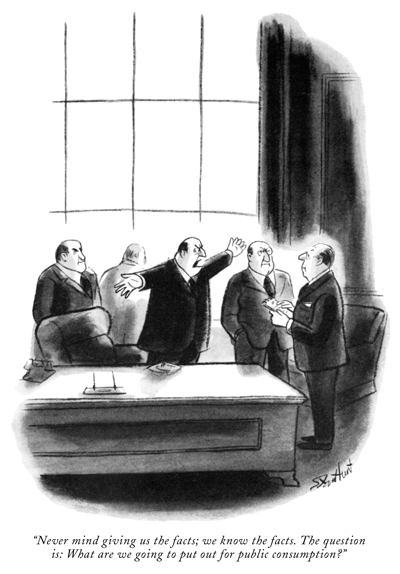| 
In Europe, cars more often than not come
with a standard gearbox instead of automatic. So in the course of accelerating,
one must “shift up,” e.g. change the gears from the lowest
to the highest.
If you shift up too late, your fuel consumption
goes up and your engine revs out of the optimal range, causing unnecessary
wear and tear. If, however, you shift down too late, you will not be able
to use your engine’s braking function when going downhill or have
insufficient torque when going uphill.
One must wonder, though, why “modal
shift” from air transport to surface-based modes of transport is
seen as something extraordinary, undesirable, and out-of-line.
One does not have to be in possession of
a master’s degree in economics to understand a very simple rule:
Transport needs are based on the needs of shippers and receivers of the
goods shipped and, ultimately, the value-for-money ratio they receive
and their ability to pass on the cost of shipping to the end user or consumer.
While understandably, IATA and other stakeholders
in the air cargo transport chain are trying to defend their business model,
one must wonder if that isn’t all for naught; after all, aren’t
the rules of a free market driving the economy?
Probably, the very simplified comparison
with a standard-gearbox vehicle is more fitting than one might assume.
Sure enough, a lot of factors need to be considered when determining modal
shifts, e.g. the gains and losses of particular transport modes.
Why should goods be shipped by air instead
of by surface-based transport, given the premium on shipping costs? There
are three main reasons:
• Perishable
goods, which cannot (or not reasonably) be shipped by surface-based transport.
Examples are pharmaceuticals with short half-lives, fresh flowers, certain
fruits such as Durian.
• Urgency
of shipping—vaccines required to combat the breakout of a pandemic;
spare parts without which an entire plant cannot function; unexpected
demand for certain high-priced consumer goods.
• Flexibility—air
transport allows the shipping of unlimited smaller consignments over great
distances for less cost and much greater speed directly to their ultimate
points-of-sale or end-users than surface-based transport modes do.
According to IATA and AEA figures, air cargo
accounts for 2 percent of the global trade by volume and 35 percent by
value, making air cargo a USD$50 Billion industry supporting in excess
of 32 million jobs. These figures should be taken with a grain of salt,
since IATA and AEA are counting everyone, including those who unload or
load air cargo pallets for a living among those whose living depends on
the well-being of the air cargo industry; however, if a certain percentage
of goods traditionally shipped by air will shift to surface transport
these jobs will be retained, for instead of unloading aircraft, these
same personnel will be unloading 40-foot-containers, railcars, or trucks.
For the import clerk filing a customs entry
form, the transport mode with which the goods have been shipped makes
little, if any, difference.
| Understanding
the drivers of the industry |
Clearly the decision whether or not to
ship by air or surface is always a value-for-money decision. That, however,
is where air cargo and their stakeholders have largely failed to deliver,
and this includes self-proclaimed interest groups such as IATA, FIATA,
and alike:
There is no need to outline in detail the
changes that have taken place in the air transport industry in the last
20+ years. The checks became more numerous, the training of staff (contrary
to statements often brought forward) has been diminished in lieu of excessive
IT reliance, and both volume of air cargo and capacities for air cargo
have increased exponentially, although the latter at a greater pace, causing
the well-known problem of diminished yields.
What has not changed however within the
legacy carrier model, be it all-cargo or combination, are the transit
times of cargoes and the overly complicated processes in the air cargo
supply chain.
The air transport time alone may well be
6–24 hours, but the time the cargo spends in forwarders warehouses,
airport warehouses, custom bonded areas, on trucks to or from the airport
has not changed much; sometimes even the contrary is true, since with
volumes going up and air cargo no longer being a high-priced and exclusive
product, service qualities have diminished.
Ample proof that transit times can be reduced
while upholding a high service level and delivering additional value for
shippers and receivers is given by integrators such as FedEx, UPS, and
TNT, whose business is to move parcels and crates between a few grams
to a multitude of metric tons seamlessly between point A and point B in
an integrated service, giving shipper and consignee the information about
the cargo’s whereabouts at every point in the journey.
While there is certainly a difference between
the legacy carrier business model and those of the integrators, despite
plenty of lip service paid by these stakeholders, obviously lessons have
not been learned. IATA failed to make E-cargo a success because they weren’t
able to communicate the benefits to the forwarders and shippers.
StB, Simplifying the Business (another IATA
initiative) is something which looks good on paper, but when it comes
to actually delivered benefits and achievements, these highly paid lobbyists
are clamming up. Likewise, Cargo 2000 is
a walking corpse of improvement. Hello? The year 2000 is 14 years in the
past already, and unless Des Vertannes can miraculously fuel up his flux
compensator, there is no way back to the future.
This being said, there is hope; one of the
key speakers in IATA’s upcoming WCS in Los Angeles will be Fred
Smith, the iconic FedEx CEO and probably one of the few persons truly
understanding the needs of the industry. Additionally, focus of the WCS
will be on pharmaceutical management, quality and efficiency, cargo security,
e-business, and “serving the niche.”
The latter is probably what both all-cargo
and combination carriers should focus on, limiting the use of all-cargo
widebody aircraft to those trade lanes where such aircraft can expect
to be filled to a degree above breaking even, even under adverse conditions.
As for filling the cargo-hungry bellies
of the 747s and 777s and satisfying the increased worldwide demand in
passenger travel, airlines have to learn that it might make more sense
to fly with a 35 percent load factor and high yields than with a 69 percent
load factor and low yields below actual handling costs.
Introducing more and more capacity into
the market has obviously not worked in the last 20 years, and there are
no indicators that it may work in the future.
While most of the gas-guzzling 747 classics
and 727 freighters have been scrapped or parked for good, high-priced
electronic gadgets have become smaller and lighter—CRT monitors
and PCs have been replaced by TFT panels and laptops, and bulky user manuals
shipped with those gadgets with a two-pager quick start guide including
a download link and/or a CD.
Large players within the industry, such as
Dell, Ericsson, Nike, and Adidas have turned around their business and
shipping practices—from 80 percent air and 20 percent surface to
the rough opposite, 20 percent air and 80 percent surface. Most noteworthy,
even highly perishable pharma goods such as Ventolin and blood products
have been shipped chilled or frozen by sea, something that was unthinkable
10 years ago.
An MLIT Japan Civil Aviation Bureau survey
undertaken in 2009 already highlighted that 16 out of 21 Japanese shippers
had shifted cargoes from the air mode to the maritime mode.
A study paper from the Tokyo Institute of
Technology identified four main pillars of this trend:
I. Rise in air freight rates (which for
the purpose of this paper included fuel and security surcharges)
II. Enhanced and efficient sea transport
services
III. Changes in global supply chain and
logistics
IV. A desire for environmentally friendly
transportation
Since Asia is a place of paramount importance
for air transport, the study investigated traffic statistics for specific,
most often shipped commodity groups (10 digits HTS code) between the “tiger
states” Malaysia, Thailand, Singapore, and Indonesia and all the
U.S. districts. More specifically, sea transport ratio (STR), which represents
the percentage value of how much was shipped by sea, was calculated as
an indicator of sea shift and divided into five categories: air dependent
(STR 0 to 10 percent), slightly air dependent (STR 10 to 40 percent),
high modal competition (STR 40 to 60 percent), slightly sea dependent
(STR 60 to 90 percent) and sea dependent (STR 90 to 100 percent).
While there was a sudden drop of the trade
values in 2009 paralleling the financial crisis, which was triggered by
the demise of Lehman Bros, there is a constant decline in the STR 0 to
10 percent and a slight but constant increase in the STR 40 to 60 percent
to the STR 60 to 90 percent range.
While IATA DG Tony Tyler constantly re-emphasizes
the importance of e-freight and that “until 2015 100 percent paperless
cargo is an important stepping stone to boost the competitiveness of air
cargo with more efficient processing and faster deliveries, (thus resulting
in) more efficient connectivity which in turn will foster economic growth,”
one must wonder whether IATA and its compatriots are not just doctoring
the symptoms instead of the root cause:
If you have a headache, you’ll take
some Tylenol. If you have constant headaches, you’ll likely see
a doctor and get it checked out.
So the question at hand becomes: Is the
potential of economic growth indeed unlimited and will just fine-tuning
the efficiency of connectivity automatically result in shifting back cargoes
to the air mode?
So far, IATA has failed to come up with
figures and facts to support their views.
The fact, however, is that the “efficient
processing” and better value for money—the mantra IATA rehashes
at every possible moment—will not materialize out of a blue sky.
Indeed it seems that Fred Smith had the means to deliver way before IATA
had realized that there was an issue:
Well-trained staff employing the latest
available technology is the key to deliver a superior transport product;
that much stakeholders can agree upon. However, while most players within
the industry (including IATA) at the height of the financial crisis in
2008 and 2009 submitted to a voluntary brain drain and got rid of their
most precious asset—human knowledge and experience (thus also necessitating
the costly ordeal of sourcing and re-hiring post crisis)—FedEx had
resorted to the unusual move of reducing salaries and freezing 401k retirement
contributions—2 percent reduction for the package loader, 25 percent
for the top executives— resulting not only in better employee morale
and corporate identity, but also retaining the investment FedEx had made
in their human capital.
Unprofessional
means
less business and less yield |
In a speech delivered at the TIACA executive
summit in Dallas in April 2013, Ericsson Head of Distribution Robert Mellin
used the word “unprofessional” multiple times in conjunction
with air transport when explaining Ericsson's shift from air cargo towards
surface-based transport modes.
Highlighting two key issues, “unexpected
surcharges” and lack of shipment visibility, Mellin concluded by
saying “You have to be suicidal if you don’t want to get out
of air freight.” While the latter may have been exaggerated, it
certainly bespeaks that the industry will need some lateral thinking at
its helm, and fast.
Again, both of these issues apply to the
legacy cargo model but not to the integrators, so obviously, despite the
differing business models, there is a lot legacy carriers can and must
learn from FedEx, UPS, and alike.
Probably IATA may want to re-think their approach taken to the issue,
because IATA’s importance is slowly but steady declining since carriers
with different business models such as Ryanair and EasyJet, just to name
two, seem to do well without the overhead and the LCC model found its
way into the cargo section.
At the ETH Summit in Zurich in April 2012,
Roland Berger Consultants held a presentation titled “Sustainability
of business models;” among the five “things to remember,”
two stand out:
First, that “despite some market leaders,
the forwarding business itself is highly fragmented” and second,
that “freight rates are becoming increasingly volatile and (so is)
demand on the forwarders’ side for more sophistication of steering
purchased capacities.”
In other words, managing modal shift from
air to surface may necessitate unusual measures, such as IAG recently
not renewing their leasing contracts with Atlas air and purchasing capacity
on Qatar instead, or AF/KLM as well as BR and other players simply reducing
the number of their freighters.
Under “Strategic key questions: How
might the forwarder’s role change within the overall value chain,”
Roland Berger is seeing the forwarder in the most crucial position.
Not for the first time, both shippers and
forwarders alike have asked airlines and their watchdog IATA for recognition
and level-field negotiations, something IATA has always dismissed.
Unless Air cargo further standardizes and
offers an integrated product encompassing all the various players—GSAs,
GSSAs, GHAs, 3rd party handlers, regulators, customs authorities, airlines,
and IT solution providers—it will further lose out in the modal
shift.
The more capacity is introduced into the
market without backing demand based on a sustainable yield, the more the
core pillars of the industry—required fleet renewal, IT systems
upgrade, and a well-trained and service-minded workforce—will be
further weakened, as key trends within the industry identified by Roland
Berger are ongoing yield decline, vertical integration, shift of key trade
lanes, increased modal split and, most notably, specialization and value
added services as well as industry-specific IT.
Talking about modal shift usually means a shift from air to sea. Nevertheless,
rail is also up and coming, since lately there is a notable increase in
full trains from Asia into Europe (currently accounting for slightly less
than 1 percent of traffic volume but steadily rising). While the air freight
industry is not just plagued by volatile markets, dropping yields and
low (or negative) ROI, it also suffers from overregulation and effective
capping of essential necessities to do business:
Regulatory measures such as night curfews,
ticket or passenger taxes, and environmental taxes increase the pressure
mainly on the traditional legacy players—the inability to operate
24/7 from one’s HUB is certainly a disadvantage compared to Asian
and middle-Eastern players who are not subject to similar restrictions.
It is therefore not surprising that the most successful European carrier
for the time being is THY, which, blessed with both a domestic market
and bordered between Europe and Asia, is not subject to EC regulations
and their sometimes-draconian regulatory measures, since Turkey is not
an EC member state.
While Roland Berger forecasted an ongoing
trend of re-routing low-value, non-perishable, or less perishable goods
from air freight to surface freight, the question is whether the air cargo
stakeholders will tackle the underlying issues of their service quality
and reduce capacity in order to improve yields, or simply lose out in
the long term sight.
Ongoing complaints from European and U.S.
carriers about “subsidized middle-eastern dominators of the game”
fail to recognize the change in business patterns. Emirates, Qatar, and
Etihad are successful because they have all the core attributes—a
young fleet (resulting in low maintenance, high reliability, and low downtime),
a well-trained and well-paid workforce (resulting in high customer satisfaction
and a quality product), sophisticated IT systems (collecting the facts
and figures required to recognize emerging trends and ascertaining visibility
of the cargoes moved), and lesser regulatory burdens in their home states.
Although all these players lack one prerequisite formerly deemed essential—a
domestic market—they all grow in an overall shrinking global air
freight market.
Although product life cycles are expected
to shorten further and this is often seen as an indicator for a continuously
growing demand in air cargo, there are doubts about such interpretation,
since these very products also become less expensive, meaning that premium
air transport costs would make up a more significant price of the finished
product. The products also become lighter and less bulky, which means
less space is required to transport them. Last but not least, consumers
increasingly tend to let environmental factors influence their purchasing
decisions where surface mode delivers a better footprint.
IATA and the air cargo community have a
choice: Assemble in LA and celebrate what has been and what is, and pass
out the usual credits and awards to… well, to the usual suspects,
but do we really care?
Or they can smarten up and listen to shippers,
forwarders, and others stakeholders first before employing measures. There’s
still hope.
Jens |




